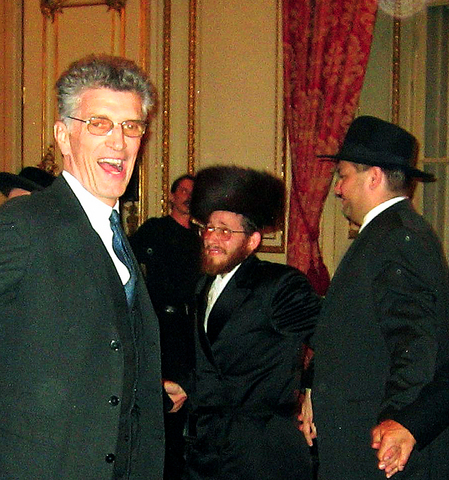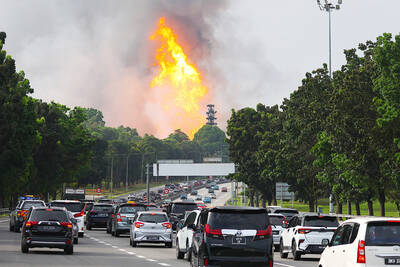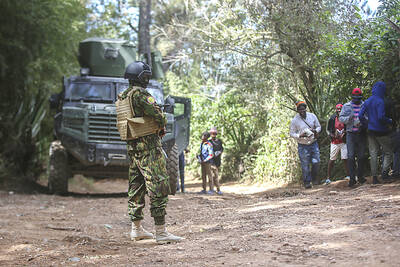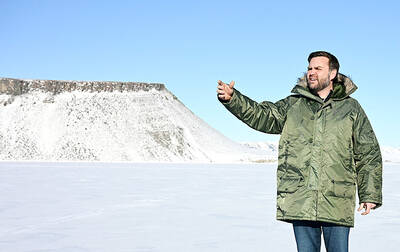Even for one of Europe's quirkier capitals, it was a bizarre spectacle -- a far-right politician who has questioned the existence of Nazi gas chambers noshing on salmon pate at a bar mitzvah and tapping his foot to wildly pulsating Hasidic music.
"The rabbi is a good friend of mine," John Gudenus said of his host. "Why, we've even had him over to the house!"
They make strange bedfellows from opposite fringes -- ultra-rightists and ultra-Orthodox Jews, joined in an alliance for diverging ends.

PHOTO: AP
Brooklyn-born Moishe Arye Friedman says he's chief rabbi for hundreds of anti-Zionist orthodox Jews in Vienna. He wants formal state recognition of his religious community, and thinks the rightists can help. Gudenus and his cohorts say they have no hidden agenda in supporting Friedman's cause -- but they may have something to gain from it.
"For people like this, being seen with an orthodox Jew is an attempt to gain some legitimacy," says Wolfgang Neugebauer, the recently retired head of the publicly funded office that tracks neo-Nazi trends in Austria. "They try to create an `alibi Jew' to escape accusations of anti-Semitism."
The rightists sorely need positive publicity.
Their Freedom Party, which shocked Europe in 1999 by winning enough election votes to merit a place in government, is on the ropes after its less extreme wing bolted to form its own party this year.
Even as Austria struggles to come to grips with the country's part in the Holocaust during the time it was annexed to Hitler's Third Reich, the hard-liners continue to provoke uproar by sounding like apologists for the Nazis.
Just last month, Gudenus declared anew that whether the gas chambers existed should be "seriously debated."
Last week he amended that view to "there were gas chambers, though not in the Third Reich but in Poland."

A fire caused by a burst gas pipe yesterday spread to several homes and sent a fireball soaring into the sky outside Malaysia’s largest city, injuring more than 100 people. The towering inferno near a gas station in Putra Heights outside Kuala Lumpur was visible for kilometers and lasted for several hours. It happened during a public holiday as Muslims, who are the majority in Malaysia, celebrate the second day of Eid al-Fitr. National oil company Petronas said the fire started at one of its gas pipelines at 8:10am and the affected pipeline was later isolated. Disaster management officials said shutting the

DITCH TACTICS: Kenyan officers were on their way to rescue Haitian police stuck in a ditch suspected to have been deliberately dug by Haitian gang members A Kenyan policeman deployed in Haiti has gone missing after violent gangs attacked a group of officers on a rescue mission, a UN-backed multinational security mission said in a statement yesterday. The Kenyan officers on Tuesday were on their way to rescue Haitian police stuck in a ditch “suspected to have been deliberately dug by gangs,” the statement said, adding that “specialized teams have been deployed” to search for the missing officer. Local media outlets in Haiti reported that the officer had been killed and videos of a lifeless man clothed in Kenyan uniform were shared on social media. Gang violence has left

US Vice President J.D. Vance on Friday accused Denmark of not having done enough to protect Greenland, when he visited the strategically placed and resource-rich Danish territory coveted by US President Donald Trump. Vance made his comment during a trip to the Pituffik Space Base in northwestern Greenland, a visit viewed by Copenhagen and Nuuk as a provocation. “Our message to Denmark is very simple: You have not done a good job by the people of Greenland,” Vance told a news conference. “You have under-invested in the people of Greenland, and you have under-invested in the security architecture of this

Japan unveiled a plan on Thursday to evacuate around 120,000 residents and tourists from its southern islets near Taiwan within six days in the event of an “emergency”. The plan was put together as “the security situation surrounding our nation grows severe” and with an “emergency” in mind, the government’s crisis management office said. Exactly what that emergency might be was left unspecified in the plan but it envisages the evacuation of around 120,000 people in five Japanese islets close to Taiwan. China claims Taiwan as part of its territory and has stepped up military pressure in recent years, including